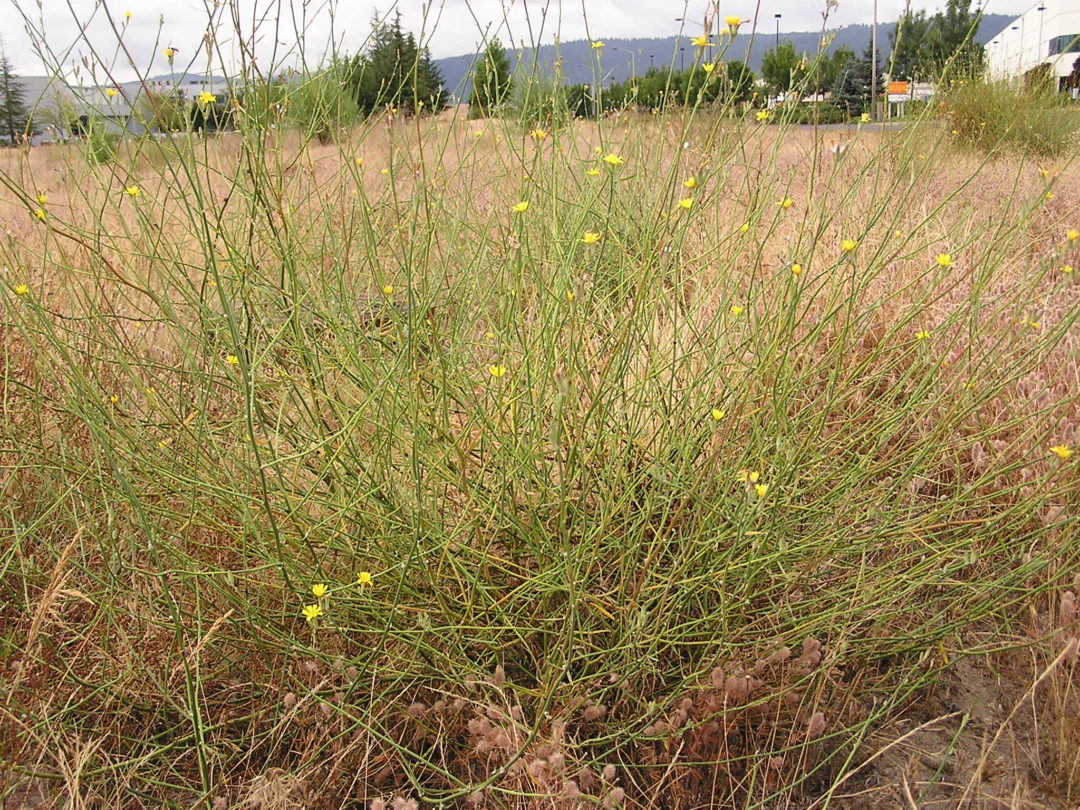Rush skeletonweed is a perennial that spreads by seeds and rhizome-like lateral roots.
Source: Washington State University Extension
Fall is the time to control rush skeletonweed. Don’t waste your time and money trying to control rush skeletonweed with herbicides during the summer. Treat problem areas in the fall with the right products at the most effective labeled rate.
Rush skeletonweed is a perennial that spreads by seeds and rhizome-like lateral roots. It occurs as a rosette from fall through early spring and as a 1- to 4-foot tall plant in the summer.
The summer growth has a skeleton-like appearance consisting of an upright stem with many thin aerial branches that may produce a few narrow inconspicuous linear leaves (see picture). The bright yellow flower heads develop during the summer and bloom into late fall.
Rush skeletonweed was introduced into the eastern United States in the 1870s from Central Asia or the Mediterranean region where it is indigenous. It has become a troublesome weed in many western states where it infests rangeland, CRP, cropland, and other disturbed areas. It is a listed as a Class B noxious weed in Washington.
Because rush skeletonweed infestations are most obvious in the summer, many people try to control them with herbicides at this time. However, summer applications are ineffective and a waste of dollars and time. Herbicides are best applied to the rosettes in the fall, before a hard freeze, and spring. Dr. Ian Burke, WSU Weed Scientist in Pullman, has found that fall applications are twice as effective as spring applications.
Synthetic auxins (Group 4 mechanism of action) can provide effective control of rush skeletonweed when applied at the correct rates and at the correct time. Herbicides such as 2,4-D, dicamba, and clopyralid (WideMatch) can be used in wheat, although use rates in wheat are often too low to provide effective control. Aminopyralid (Milestone) and aminocyclopyrachlor (Perspective) can be used in rangeland, CRP, and natural areas to control rush skeletonweed. These products can provide control for multiple years.
For more information on rush skeletonweed, including a discussion on possible biological control methods, see the Pacific Northwest Extension Publication PNW465 titled “Rush Skeletonweed”.







Post a comment
Report Abusive Comment